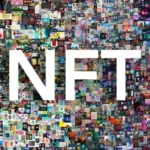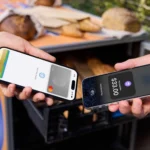The NFT (Non-Fungible Token) market has exploded in recent years, drawing attention from investors, artists, gamers, and tech enthusiasts. Whether you’re looking to turn your digital art into income or invest in digital assets, understanding the fundamentals of buying and selling NFTs is crucial. This comprehensive guide walks you through the steps, tools, and strategies to navigate the NFT marketplace.
What Are NFTs?
NFTs are digital assets verified using blockchain technology, typically on Ethereum, that represent ownership or proof of authenticity of a unique item. Unlike cryptocurrencies such as Bitcoin or Ethereum, which are fungible and interchangeable, NFTs are one-of-a-kind. Common examples include digital art, music, collectibles, virtual real estate, and in-game items.
Step-by-Step Guide to Buying NFTs

Get a Digital Wallet
- Choose a crypto wallet like MetaMask, Trust Wallet, or Coinbase Wallet. These wallets allow you to store cryptocurrencies and interact with NFT platforms.
- Ensure it is compatible with the Ethereum blockchain, as most NFT marketplaces operate on it.
Buy Cryptocurrency
- Purchase Ethereum (ETH) from a reputable exchange like Coinbase, Binance, or Kraken.
- Transfer ETH to your digital wallet.
Choose an NFT Marketplace
- Popular platforms include OpenSea, Rarible, Foundation, SuperRare, and Nifty Gateway.
- Each has different onboarding processes, fee structures, and artist vetting mechanisms.
Browse and Buy
- Explore available NFTs based on categories such as trending, art, music, or sports.
- Pay attention to ownership history, pricing trends, and the creator’s reputation.
- Click “Buy Now” or place a bid if it’s an auction.
Transaction Confirmation
- Confirm the transaction through your wallet.
- You may need to pay a gas fee depending on network congestion.
- Once the transaction is confirmed, the NFT will appear in your wallet or user profile.
How to Sell NFTs
Create and Mint Your NFT
- Use marketplaces like OpenSea or Rarible to mint (tokenize) your digital item.
- Upload your content, add metadata (title, description, royalties), and list it.
Set Pricing
- Choose between fixed price, timed auction, or declining price.
- Consider the current market trends and your reputation.
Promote Your NFT
- Use social media, Discord, and NFT communities to generate interest.
- Collaborate with influencers or use email marketing.
Complete the Sale
- Once a buyer purchases your NFT, you’ll receive ETH in your wallet.
- Secondary sales may yield royalties if you configured them during minting.
Key Considerations Before Buying or Selling
- Market Volatility: NFT prices can be highly volatile. Invest only what you can afford to lose.
- Authenticity and Scams: Verify the legitimacy of NFTs and sellers. Use verified collections and platforms.
- Gas Fees: These can add significant cost to transactions. Monitor gas fee trackers to time your purchases.
- Legal Implications: Understand copyright and intellectual property laws, especially when minting or reselling content.
Popular NFT Marketplaces Comparison Table
| Marketplace | Blockchain | Minting Fee | Royalties Support | Best For |
|---|---|---|---|---|
| OpenSea | Ethereum | Yes | Yes | All types of NFTs |
| Rarible | Ethereum | Yes | Yes | Community-driven NFTs |
| Foundation | Ethereum | Yes | Yes | High-end digital art |
| Nifty Gateway | Ethereum | No (custodial) | Yes | Exclusive drops |
| SuperRare | Ethereum | Yes | Yes | Curated digital artwork |
Advanced Topics and Strategies

NFT Flipping
- Buy low, sell high. Look for undervalued assets with potential growth.
- Use analytics tools like Nansen, DappRadar, and Icy Tools.
NFT Staking and Utility
- Some NFTs offer staking opportunities or access to virtual events, games, or DAO memberships.
- Always read the project’s whitepaper or roadmap.
Fractional NFTs
- Allows co-ownership of high-value NFTs.
- Platforms like Fractional.art facilitate these investments.
Using Layer 2 Solutions
- Avoid high gas fees with Layer 2 blockchains like Polygon.
- Many platforms now support multi-chain or Layer 2 minting.
NFTs in Gaming and the Metaverse
- Game-based NFTs include characters, skins, weapons, or land.
- Metaverse platforms like Decentraland or The Sandbox integrate NFTs as core assets.
Tax and Financial Considerations
- Track all NFT-related transactions for tax purposes.
- Consult a tax professional familiar with crypto and digital assets.
Security Tips
- Use a Hardware Wallet: Store valuable NFTs in cold storage like Ledger or Trezor.
- Avoid Phishing Links: Only access platforms through official URLs.
- Two-Factor Authentication (2FA): Enable 2FA on wallets and exchanges.
- Back Up Seed Phrases: Never share or store online.
ALSO READ: How to Buy Your First Cryptocurrency and Keep It Safe?
Conclusion
The world of NFTs opens a new frontier for digital ownership and commerce. Whether you’re an artist looking to monetize your work, a collector chasing rare assets, or a trader seeking profits, understanding how to buy and sell NFTs is essential.
As the ecosystem matures, opportunities and risks will evolve—so staying informed, secure, and strategic is key to success. Start small, research thoroughly, and explore this dynamic digital economy with confidence.







